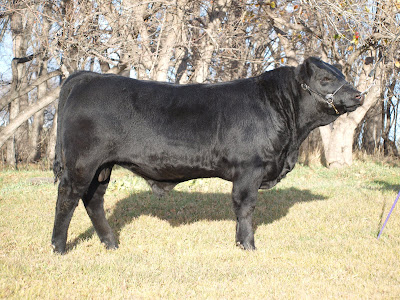It seems that everywhere, everyone wants to be a cowboy or cowgirl. People are wearing cowboy boots, belt buckles, cowboy hats, and western shirts. In their homes, paintings by Russel and Remington hang on the walls. Their stereos play Strait and Jackson. A John Wayne western in the DVD player. More and more, we are seeing urban people trying to be involved in the western and country lifestyle. In a way, I guess we can feel flattered that more people want to be like us, but at the same time, we have to wonder, why?
 |
| My hero |
I grew up a-dreamin' of bein' a cowboy
Lovin' the cowboy ways
Pursuin' the life of my high-ridin' heroes
That burned up my childhood days
During our childhood years, everybody would dress up as a cowboy or cowgirl for fun. Whether it was the cool outfits we put one, or riding our stick horse, toy pistol in hand, we all found fun in dressing up as those western heroes. For the many kids that didn't grow up in a country background, they were exposed to western television shows, movies, and music, such as Home on the Range. I grew up watching John Wayne movies, and since the age of 8, he has been my hero. We admire cowboys because they are brave, work hard, can ride, and have morals. Often, we see them as role models.
Cowboy take me away
Fly this girl as high as you can into the wild blue
Set me free, oh I pray
Closer to heaven above and closer to you, closer to you
Isn't it every girls dream to be on the back of their cowboy's horse, riding off into the sunset? Well maybe not everyone's dream, but it was mine. There is something romanticized about having a cowboy coming home to you, after being out all day on horseback working in the dirt and heat. Old western movies have portrayed the cowboy as the "it" guy, because of his many attractive qualities, such as bravery, work ethic, nature, and the way he works a pair of Wranlers. What can I say, ladies love country boys!
Amarillo by moring, up from San Antone
Everything that I got, is just what I got on
I ain't got a dime but what I got is mine
I ain't rich but Lord I'm free
Amarillo by morning, Amarillo's where I'll be
What many people love about the western life is the sport of rodeo. Starting out as competitions between cowboys and vaqueros testing their work skills against each other now has become a popular and loved sport by people around the world. The sport still shows skills of cowboys and cowgirls in the pro events of tie-down roping, team roping, steer wrestling, saddle bronc riding, bareback riding, barrel racing, and bull riding. Not always an easy life, but one that is an adventure and full of surprise and the unknow. This life is admired by many as it is free, has values, and has a wholesome feeling.
Cowboys like us sure do have fun
Racing the wind, chasing the sun
Take the long away around back to square one
Today we're just outlaws out on the run
They'll be no regrets, no worries and such
For cowboys like us
The western life is adventurous, fun, and so far away from what most people live like today. While many people won't ever get the chance to be fully involved in a western lifestyle, there are ways to get just a taste of it. The Calgary Stampede has been held annually since 1912 in Calgary, Alberta, and is described as "the greatest outdoor show on earth!". The 10 days that the show is held features rodeo, chuckwagon races, livestock shows, concerts, agricultural activities, a midway, a western art showcase, and much more. Every year, scads of people come out to enjoy themselves in one of Calgary's oldest traditions. The show still represents the dream of founder Guy Weadick; to celebrate the romance and authentic culture of the old west.
When people can have a piece of that, it brings them closer to that mystique. Whether it be a painting, home decor, music, or a pair of boots, people everywhere want to have a piece of the old west.
http://calgarystampede.com/ The Greatest Outdoor Show on Earth!
http://westernshowcase.com/ Western Art at it's best, plus I am featured in it this year!
http://www.youtube.com/watch?v=OMko5LelBdA My Heroes Have Always Been Cowboys, Willie Nelson
http://www.youtube.com/watch?v=hntXAO_Rq7c Cowboy Take Me Away, Dixie Chicks
http://www.youtube.com/watch?v=_KrrsLZaY9s Amarillo By Morning, George Strait
http://www.youtube.com/watch?v=aR5LK52k8dE Cowboys Like Us, George Strait





















